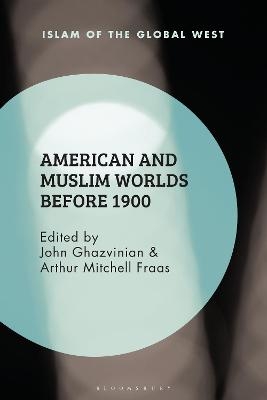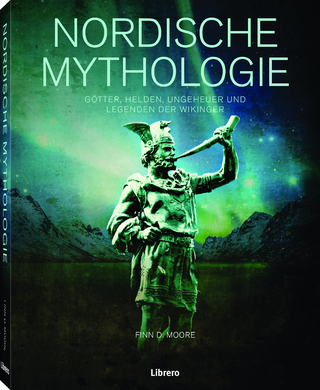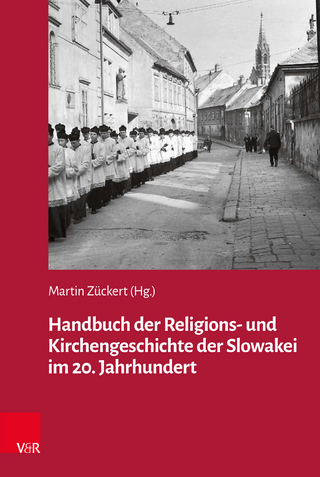
American and Muslim Worlds before 1900
Bloomsbury Academic (Verlag)
978-1-350-10951-3 (ISBN)
Some of the earliest American Muslims were the African slaves working in the plantations of the Carolinas and Latin America. Thomas Jefferson, a slaveholder himself, was frequently called an "infidel" and suspected of hidden Muslim sympathies by his opponents. Whether it was the sale of American commodities in Central Asia, Ottoman consuls in Washington, orientalist themes in American fiction, the uprisings of enslaved Muslims in Brazil, or the travels of American missionaries in the Middle East, there was no shortage of opportunities for Muslims and inhabitants of the Americas to meet, interact and shape one another from an early period.
John Ghazvinian is Associate Director of the Middle East Center, University of Pennsylvania, USA. He is the author of Children of the Revolution: Iran and America since 1600 (2018). Arthur Mitchell Fraas is Senior Curator of Special Collections at the Kislak Center for Special Collections, Rare Books and Manuscripts at the University of Pennsylvania Libraries, USA.
List of Images
List of contributors
Introduction
Part One: Islam and the Making of the Early American Republic
1. Benjamin Franklin, Islam and the Abolition of Slavery (Denise Spellberg University of Texas at Austin, USA)
2. The Greek War of Independence and the Ideological Manifestations of
the Clash of Civilizations Theory in the United States, 1821-1830, Karine Walther (Georgetown University School of Foreign Service, Qatar)
Part II: The Muslim Experience in the Americas
3. Nicholas Said’s America: Islam, the Civil War, and the Emergence of African
American Narrative, Ira Dworkin (Texas A&M University, USA)
4. Transcending Transcendentalism: An Islam Surface Reading of
African Muslim Slave Narratives in Antebellum America, Zeinab McHeimech (Western University, Canada)
5. Crossing Oceans, Transgressing Boundaries: Incorporating Muslims and
Moriscos into Histories of Colonial Spanish America, Karoline Cook (Royal Holloway, University of London, UK)
Part III: Muslim Worlds in the American Imaginary
6. ‘An Unwelcome Present’: Simulation and Simulacra in the Unlikely
Friendship of General Lew Wallace and Sultan Abdülhamit II, Bill Hunt (Barton College, USA)
7. The Lost Tribes of the Afghans: Religious Mobility and
Entanglement in Narratives of Afghan Origins, William E B Sherman (UNC Charlotte, USA)
8. Imagining Empire: Islamic India in Nineteenth-Century US Print Culture, Susan Ryan (University of Louisville, USA)
Part IV: Islam and American Empire: The Case of the Philippines
9. Subjugating the Sultan of Sulu: American Imperial Negotiations in the
Muslim Philippines, Timothy Marr (University of North Carolina, USA)
10. Native Americans, the Ottoman Empire, and Global Narratives of Islam
in the US Colonial Philippines, 1900-1914, Joshua Gedacht (Rowan University, USA)
11. An Ottoman Notable in America in 1915-1916: Sayyid Wajih
al-Kilani of Nazareth, William G Clarence-Smith (SOAS, University of London, UK)
Epilogue: The Global History of American and Muslim Worlds, Heather J Sharkey (University of Pennsylvania, USA)
Bibliography
Index
| Erscheinungsdatum | 14.02.2020 |
|---|---|
| Reihe/Serie | Islam of the Global West |
| Verlagsort | London |
| Sprache | englisch |
| Maße | 156 x 234 mm |
| Gewicht | 508 g |
| Themenwelt | Geisteswissenschaften ► Geschichte ► Allgemeines / Lexika |
| Geisteswissenschaften ► Geschichte ► Allgemeine Geschichte | |
| Geisteswissenschaften ► Religion / Theologie ► Islam | |
| ISBN-10 | 1-350-10951-7 / 1350109517 |
| ISBN-13 | 978-1-350-10951-3 / 9781350109513 |
| Zustand | Neuware |
| Haben Sie eine Frage zum Produkt? |
aus dem Bereich


